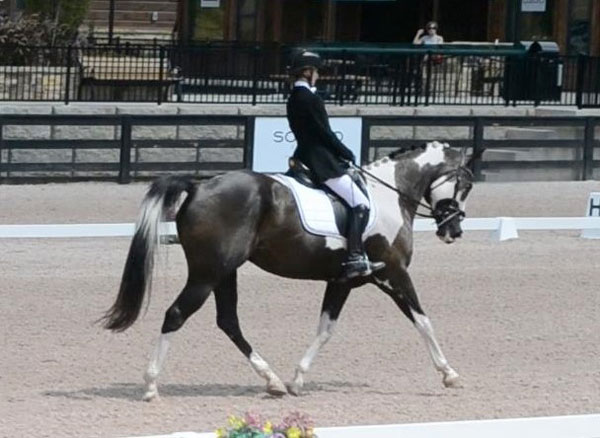The show where I judged last weekend was the dressage portion of a combined training event, and it was a wonderful experience. I felt like Mrs. Santa, handing out 8s like candy. I know I scored more 8s than 5s and 4s together, a lot more.

I judged Novice and Preliminary tests, equivalent to Training and First Levels in straight dressage. I think I may have used the dreaded “behind vertical” comment only once the whole day. Most of the horses, even the Novice ones, were reliably on the bit and, if I did say “Above the bit, 6,” it was mostly just on a transition from trot to canter, which is the usual suspect. Best of all, I saw very straight horses who were moving with energy and more suppleness than I usually see at a dressage-only show.
Since then I’ve been thinking to myself about why these particular classes went so beautifully. For one thing, I felt the two tests I judged flowed particularly well, even in the small arena. I also think the lack of a halt on the first centerline was helping the riders get right into the tests. A lot of those 8s were for that centerline through the turn at C.
I have always been fairly critical of dropping the halt/salute from the first centerline for tests above Introductory Level. The eventing tests do not include a halt/salute on the centerline until Preliminary B. The usual argument for putting that halt back in, of course, is that horses should be able to halt if they are going to be asked to also go cross-country. At this show, however, the way that the riders went down that centerline with such confidence and energy carried over to the rest of the test as well.
I am going to pay more attention to the eventing tests I see that don’t include halts on the centerline to see if that is more often the case than I realized. I do feel, with Training Level dressage tests, that the section from that first halt at X through the turn at C is, for many, the most difficult part of the test, and if they have trouble there it can carry over to tension and stiffness for several movements to follow.











